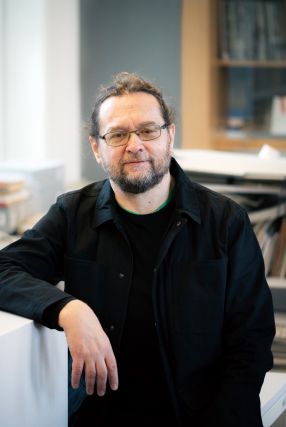‘temporary exhibition’
- « previous
- 1
- 2
- 3
- 4
- next »
TÓTalJOY Prize
… and supporter of the TÓTalJOY Prize, had long been planning to create a form of support for contemporary Hungarian artists. The prize derives its name from Endre Tót’s conceptual program centred on the notion of joy, which was launched in the 1970s. His early joy pieces and the actions of the TÓTalJOY series are considered among the most important works of Eastern European conceptual art. The TÓTalJOY Prize, with a monetary value totalling EUR 10,000, aims to provide financial and …
Ildikó Eleöd
… and Culture at Pázmány Péter Catholic University. Between 2010 and 2016, she worked as an exhibition organizer and collection manager at MODEM Center for Modern and Contemporary Art in Debrecen. In addition to working on processing the Antal Lusztig Collection, she was also, for instance, curator of the exhibition entitled The Plain: Stories from the Past Two Hundred Years of Hungarian Fine Arts (2014). In 2012, she was awarded a grant to study the workings of the French Regional …
László Százados
… working at the Hungarian National Gallery since 1988, until 2020 as Chief Museologist of the Contemporary Collection, and since 2021 as Chief Museologist of the KEMKI Archive and Documentation Center (ADK). He has been editor of the Balkon journal of contemporary art since 1997. He is a member of the Hungarian Section of AICA since 1999. He has organised and contributed to a number of permanent (HNG) as well as monographic and thematic temporary exhibitions (HNG; Ludwig Museum, BHM …
Zsófia Kókai
… Studies. She then attended the Hungarian University of Fine Arts and obtained an MA in Contemporary Art Theory and Curatorial Studies in 2017. Subsequently, between 2017 and 2021, she worked as communications manager, and then curator, at the Moholy-Nagy University of Art and Design. Since 2021, she has worked for the Artpool Art Research Center as an assistant museologist, participating in and working on international collaborations, curatorial projects, conferences, events, …
Eszter Molnár
… work focuses on Hungarian textile and tapestry art, as well as material-centred trends in contemporary art. She holds an MA degree in Art History and Hungarian Language, Literature and Culture from Eötvös Lóránd University (ELTE). As a student of the “Literary Modernity” Program of ELTE’s Doctoral School of Literary Studies, she studied the image theory (magical pictoriality) of Hungarian literature and fine arts from the interwar period. She has been working as a freelance curator …
- « previous
- 1
- 2
- 3
- 4
- next »




